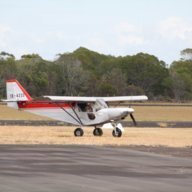G'day, my experiments are limited to three faceted lifting body aircraft and a larger number of hand launch gliders.
We first built a model of the Facetmobile, which flew reasonably well while under power, but had an horrendous power off glide. To understand the poor aerodynamic efficiency simply draw some longitudinal section from the centreline to the wing? tip of the FMX4, you will see the very large amount of washout, I think the Designer did this for reasons of safety but the result is a very poor overall L/D.
I designed another faceted lifting body but ensured that the washout problem was fixed and the longitudinal sections approximated to a "normal" aerofoil at a normal angle of attack, the result is the model you can see in the Youtube clip I posted several years ago. The model was the same size and weight as the Facetmobile model but as you can see it has an excellent L/D as well as vortex lift at large angles of attack and no perceptible stall.
No matter what shape the planform these low aspect ratio aircraft have no magic method of overcoming the high induced drag associated with a high span loading, they limit the adverse effects of the induced drag by having a much lower wing loading and using the vortex created by the planform to increase the lift at high angles of attack for a very low landing speed. You should aim for a wing loading not much more than about 60% of a conventional planform aircraft designed for a similar mission. It is not difficult to have a low wing loading because they are all wing.
My third model was to investigate a slightly different arrangement and simplification of the facets, it had a far better L/D than the FMX4 but did not fly as well as the MK2 model.
I have to thank my friend Danny Leach for building the models to my designs and his skill in flying the models.


